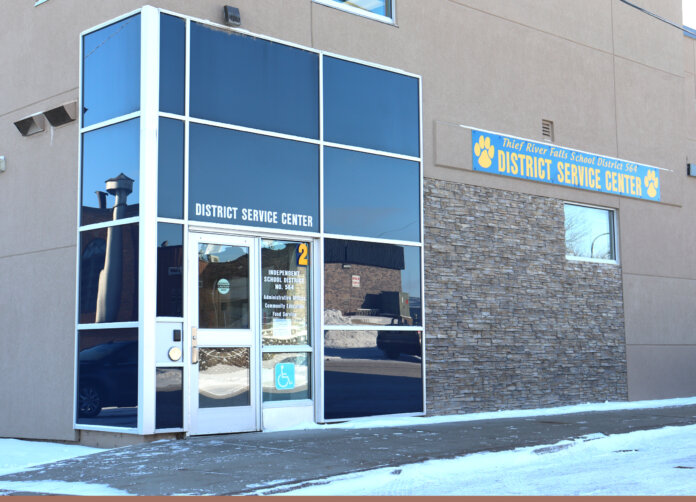by David Hill
Editor
The mid-year budget review shows expenditures in School District 564 keeping pace with expenditures from last year at this time, but definitely ahead of expenditures for 2022 and 2021.
The mid-year budget review is an opportunity for the district to take a look at overall spending, and ensure dollars are being spent according to plans. To date, expenditures are sitting at 36.1% as compared to 35.4% the previous year. At this time in 2022 and 2021, expenditures were at 30.8% and 23.4% respectively.
Superintendent Dr. Chris Mills said after reviewing the numbers the fund balance is estimated to be at 12.7% of total annual expenditures at June 30, 2025. That’s below the targets set for the District.
There was some good news, revenues were estimated to be higher by $300,000 than originally budgeted. This number was impacted by higher student activity fees, lower general education aid due to an enrollment decline of 40 students, new literacy revenue, additional federal revenue and state special ed revenue, and an increase in other state revenues.
Mills noted that the numbers show expenditures being higher than originally budgeted due to the planned purchase of 1:1 devices. Every three years, the District replaces all 1:1 devices (computers) for students. The impact on the budget is not significant this year as the District sets aside money every year for this planned purchase. Mills said they are discussing options in preparation for replacing 1:1 devices in the future, specifically seven years from now.
John Syvertson, school board representative on the Finance Committee, said the mid-year budget looks to be as planned and with no major deviations. He said the committee met to discuss the mid-year budget and a number of other items, including reductions for the 2025-26 school year. The $300,000 in proposed reductions are in response to declines in enrollment. The largest decline in enrollment has taken place at Challenger Elementary School.
Syvertson said the committee also discussed cost savings of iPads instead of Macbooks.
Syvertson said the city approached the district for funding for half of a School Resource Officer position. It was discussed in committee, he said, but the committee decided to revisit it again next year.
Mills said residents may see the District in good financial shape in the coming years, and may ask why the School Board is planning $300,000 in cuts. Mills said these cuts will be based on enrollment.
Enrollment as of Jan. 6, 2025 was 1,697 K-12.
Band Trip
Lorrisa Skalsky, band teacher in the District, requested permission to take 16 students – eight boys and eight girls from the junior and senior class – on a short trip in May to the Twin Cities. Skalsky explained that the band generally travels every other year, and normally this would be a travel year to such locations as Disney World. However, it was decided to wait one year due to the referendum and a lot of other concerns. Many of the 16 students who would go on this trip would miss that trip and opportunity.
The trip to the Twin Cities would include master classes, a performance at Valley Fair and a visit to Chanhassen Dinner Theatre.
Although she would only have 16 students, Skalsky said instrumentation was the least of her concerns. She said the students balance well, and perform well together.
Educational Services
Gov. Tim Walz declared the week of Jan. 20-26 as Paraprofessional Recognition Week. Cassey Farrell, learner support services coordinator, in School District 564, praised the efforts of paras and their efforts to assist students.
Paras are non-licensed support staff who are educational assistants and perform essential duties. Paras fall under the umbrella of learner support services in the District.
Farrell said currently there are 385 students in the District receiving special education services.
Among the services provided in the District are speech and occupational therapy. (Occupational therapy helps youth participate in school activities and be more successful.) Farrell said that the District is entering a new era of virtual services. Both services are now being provided virtually.
She also said the department has been focusing on maximizing reimbursements for services provided.
School districts in Minnesota can request reimbursement for special education services from health insurers and other programs. Mills said the District is making progress toward maximizing reimbursement, and going forward there are opportunities to improve on that.
Farrell also discussed growing demands for mental health services, and work on the District’s compliance with Section 504. (School districts comply with Section 504 by providing equal access to education for students with disabilities.)
Farrell said she had met with School Nurse Nicole Wienen. She noted a lot of sickness is sweeping through the schools at this time.
The District’s Multicultural Support Services program has received a Native Language Revitalization grant to build on native culture through language. Farrell said they don’t know how much the grant will be.
She said Amber Neadeau, Native American Education liaison, has earned the qualifications to become a cultural teacher but needs approval from the Red Lake Council.
Farrell briefly discussed some of the other programs and initiatives taking place in Multicultural Support Services, including a partnership with Rosetta Stone to create a language learning platform.

